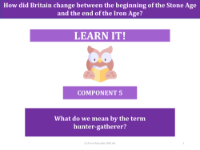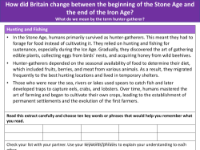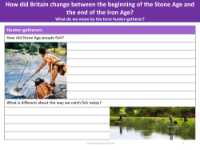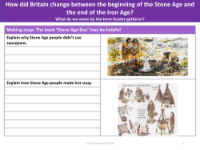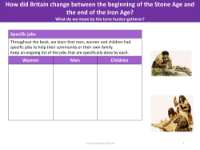Hunter-gatherer hunting - Writing task
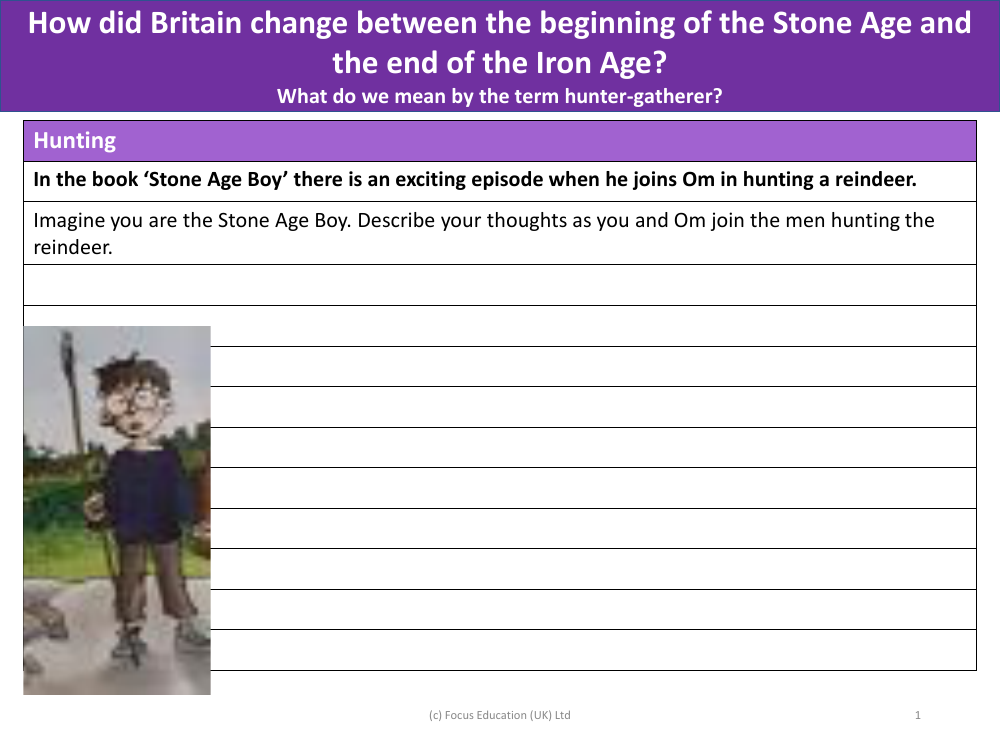
History Resource Description
Envisioning myself as the Stone Age Boy, the thrill of the hunt courses through my veins as Om and I stealthily join the men on their quest to bring down a reindeer. My heart pounds against my ribcage, a rhythmic drum that echoes the footsteps of our prey. There's a palpable tension in the air, a mix of fear and excitement, as we tread lightly through the underbrush. My thoughts are a whirlwind of anticipation and worry; the success of the hunt is crucial for our survival, but the danger is real. I can't help but marvel at the skill and connection to nature that Om and the others possess, a silent language of tracks and signs that they read with ease. As we get closer, I grip my makeshift weapon tighter, the weight of responsibility heavy in my hands.
Britain underwent profound transformations from the onset of the Stone Age to the conclusion of the Iron Age. The early nomadic lifestyle of hunter-gatherers gradually gave way to settled farming communities during the Neolithic period. Monumental structures like Stonehenge were erected, signifying a shift towards more complex societies. By the Iron Age, the introduction of iron smelting revolutionised tools and weaponry, leading to advancements in agriculture, warfare, and trade. Societal structures became more hierarchical, and distinctive cultural practices emerged, laying the groundwork for the Britain we know today.
The term 'hunter-gatherer' refers to a way of life practised by early humans before the advent of agriculture. These societies relied on hunting wild animals and foraging for plants, seeds, nuts, and fruits to sustain themselves. Their survival depended on a deep understanding of their environment, seasonal migration patterns of game, and the availability of edible plants. Hunter-gatherers were nomadic or semi-nomadic, moving within their territories to exploit different resources throughout the year, living in harmony with the natural world that provided for their needs.
